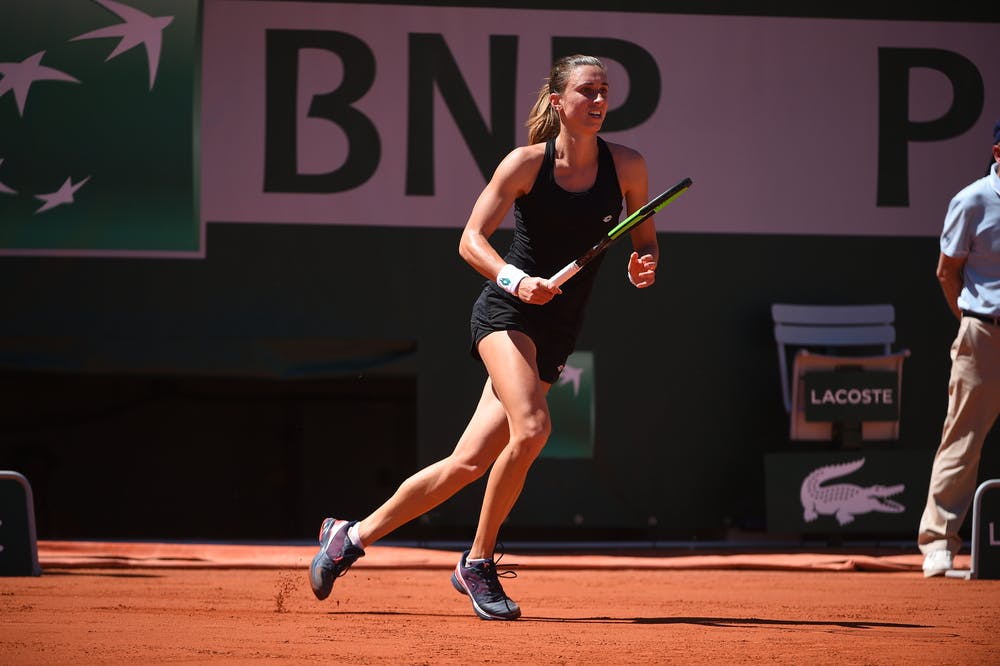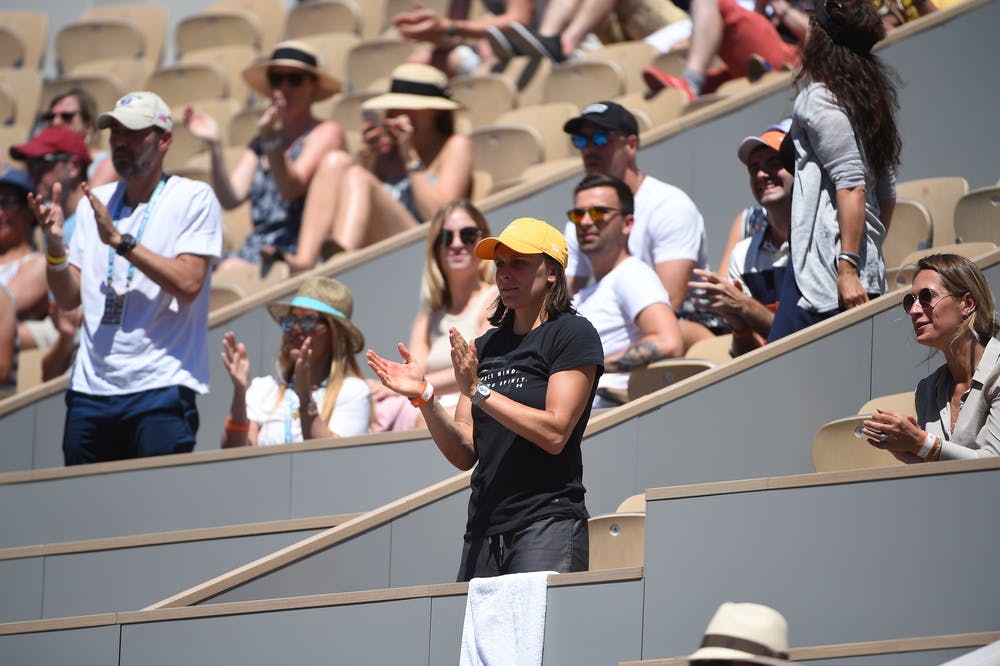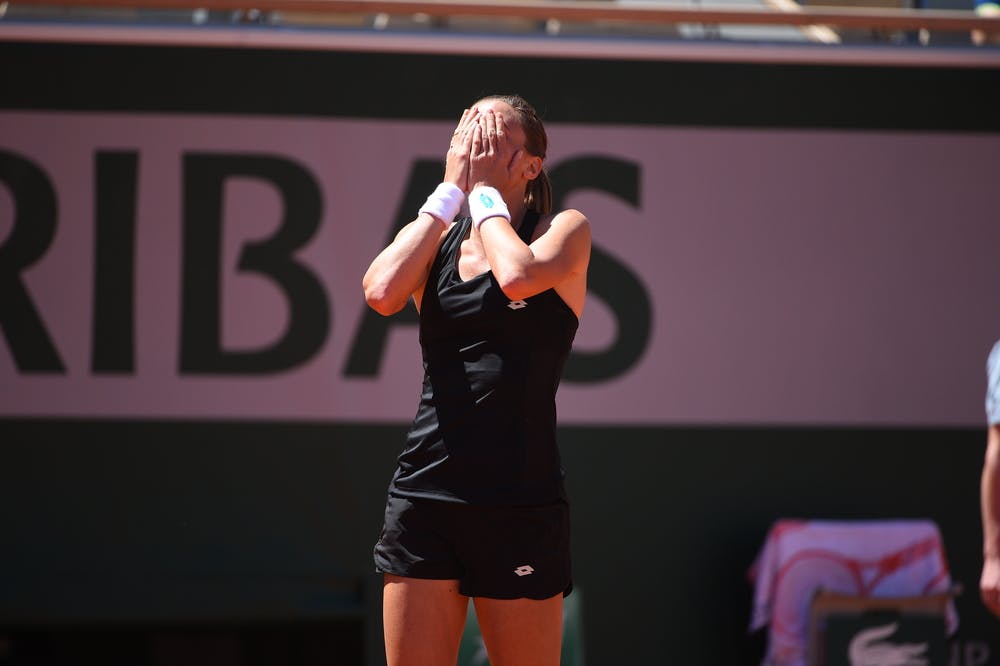“I showed [the video] to her because I didn’t see it as a bad thing,” says Zaniewska.
“I saw it as a really beautiful moment, of someone who played a match and lost by only one point difference but played a great match and came out just so hurt that it didn’t fall her way. It’s a tough moment but on the other hand it was a great experience, great match, great growth opportunity, great entertainment for all these people that saw it. I came to her not long later and I said, ‘Hey, you’re going to keep on playing like this and you’re going to be winning tournaments like this soon’, and here we are. Maybe still far from winning but as close as she’s ever gotten.”
Heartbreak at Indian Wells
Martic, who was defending quarter-final points at Indian Wells in March, lost in the first round to Poland’s Magda Linette 7-6 in the third. It was a crushing defeat that left her crying in the parking lot after the match. Zaniewska gave her quite the pep talk.
“I said, ‘Listen, let’s get back to work, it’s going to be amazing. I’m telling you it’s going to be amazing, the only thing we need is time’. And I kept on telling her for weeks, every day,” said Zaniewska.
Martic had broken her small toe in that match against Linette and the continuous bad luck really got to her.
“Again she starts crying and she’s like, ‘I don’t know why this is happening to me? Again I can’t practice but I really need to, like what’s going on?’ And someone took a really great picture of us, Petra is like down on the court and crying and I’m just there holding her, and I’m like, ‘Listen, we’re going to do whatever we can, even if it’s standing, we’re just going to hit balls and that’s it. If it’s going to hurt, then we’re going to do even less, we’re going to work with what we have. This is the toughest time, but everything after will be super easy. This can build you up so much for later. I really see good things coming’,” Zaniewska continued.
The clay upswing
Her coach was not wrong. By early April, Martic had started the clay-court season healthy and worry-free, reaching the semis in Charleston before her great results in Istanbul and Madrid. She is now in her maiden Grand Slam quarter-final and riding the wave.
“It [the tough times] gave her a whole new level of appreciation, like, ‘Okay I can be here and I can play, let’s not get stuck on little things, let’s just enjoy it’. And then suddenly she just went up and I think now she’s just on a roll. And I keep on telling her now, ‘Now you’re here, you have this momentum, just use it. Risk more. Because it’s so much easier to risk it now than if you’re out of top 50,” said the Polish coach.
RG is an opportunity
With the likes of Naomi Osaka, Serena Williams, Karolina Pliskova and Garbine Muguruza already out of the tournament, there is (once against at a women’s Slam) a sense of a real opportunity on the table here for any of the remaining eight ladies to lift the trophy on Saturday. It’s a fact that is definitely on Martic’s mind.
“I always tell her not to look too far ahead. Of course everywhere we come we want to win, no matter who is playing and I think that’s the case for every single player. So it’s nothing new. I think she’s feeling it a little bit. She’s looking a little bit more around but she’s really aware of it. She feels this need to go more inward and stay focused,” says Zaniewska.
 ROLAND-GARROS
18 May - 7 June 2026
ROLAND-GARROS
18 May - 7 June 2026




